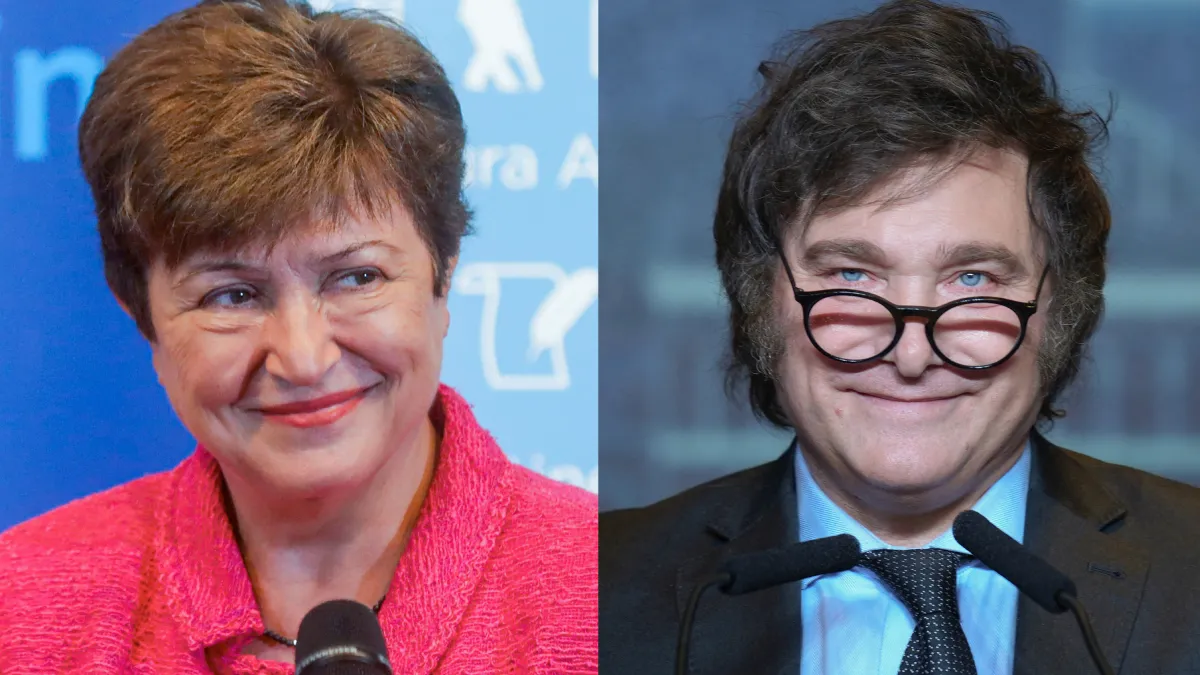Despite the new disbursements, the national government will face a negative balance with the IMF of USD 7.2 billion until 2027.


The recent approval of the first revision of the agreement with the International Monetary Fund (IMF) confirmed a new disbursement of USD 2.1 billion to Argentina . However, beyond this injection of foreign currency, the net flow with the multilateral organization will change direction and turn negative: by the end of Javier Milei 's term, the country will pay the IMF more than USD 7.2 billion net in interest and principal.
Phase 3 of the economic program began in April with the receipt of USD 12.396 billion from the Fund . The new disbursement approved this week will be the last significant one in the short term. From now on, payments will begin to exceed receipts.
In fact, according to estimates by the consulting firm Eco Go , led by Marina dal Poggetto , of the USD 2.1 billion approved, more than USD 800 million will be allocated immediately to pay interest for the month of August. The net balance will then begin to turn negative, given that future payments will be smaller and more spaced out , while interest will continue to accrue, and principal payments will also begin in September 2026.
#Memo | Milei's first IMF waiver
Three months after the program began, the IMF announced this week that a staff-level agreement had been reached that, once approved by the organization's Board of Directors, would allow the release of USD 2.1 billion. pic.twitter.com/LtLHXFQsge
According to Eco Go projections, between now and December 2027—when the current presidential term ends—Argentina will have paid the IMF a net total of USD 7.2 billion. In technical terms, this represents a "negative net flow," which shows that the country is returning more than it receives.
The total debt owed to the Fund currently stands at USD 48 billion, a figure that will increase to just over USD 50 billion after the new disbursement . However, the next payments will be smaller: USD 1 billion in November of this year and four installments of USD 700 million between 2026 and 2027.
The agreement reached in April forced the government to modify its exchange rate strategy: the 1% monthly crawling peg was eliminated and the government opted to maintain a wide range for the exchange rate (between $1,000 and $1,400) . The objective was to accumulate reserves, contain country risk, and enable eventual debt refinancing in voluntary markets.
However, the government abandoned its foreign currency purchases outside the band's floor and focused on issuing peso-denominated bonds to non-residents in exchange for dollars . This decision later came up against the backdrop of tightening international financial conditions and higher interest rates.
Despite the influx of funds from the IMF and other multilateral organizations, reserve accumulation remains a challenge. Even the Fund itself, in its review of the agreement, agreed to relax this target in light of the difficulties observed.
Among the factors explaining this tension is the strong demand for dollars from the private sector. According to Eco Go, so far this year, the formation of external assets (flight or hoarding) and tourism abroad generated an outflow of USD 14.69 billion. A large part of this demand was met by record export sales, especially agricultural exports, and by private external financing.
In this context, initial expectations that hoarded dollars would remain within the system faded . At the same time, announcements about the use of "cushion" currencies also failed to translate into a significant contribution.
Meanwhile, Foreign Direct Investment (FDI) continues to struggle to recover . In fact, the net flow is negative, as local companies purchase assets from foreign companies, despite the promises of new capital associated with the Large Investment Incentives Regime (RIGI).
Although the government has managed to stabilize the exchange rate, reduce inflation, and improve some financial indicators, the outlook for the coming years shows increasing pressure on reserves . The negative net flow with the IMF, coupled with private demand for foreign currency and the fragility of genuine dollar inflows, presents a complex scenario for the second half of Milei's term.
The central challenge will be to balance this negative flow with a sustainable financing strategy, prevent the return of exchange rate tensions, and maintain confidence in economic policy.
elintransigente





